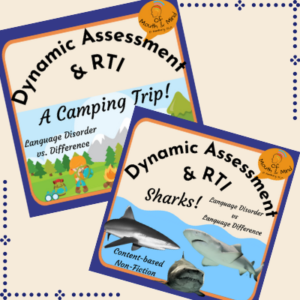What to Consider When Assessing Culturally & Linguistically Diverse Children
Using Dynamic Assessment when assessing “culturally and linguistically diverse” (CLD) children is critical, but why? Assessing CLD children for a Communication Disorder can also be an arduous task, though it doesn’t have to be. We just need to be very considerate of whether the language behaviors we are observing are a language disorder rather than a language difference. It can be done very simply with a good tool for testing, teaching, and then retesting. And of course, keep in mind some very important principles or considerations for determining language difference vs. disorder:
- Learning effort of the child- Learning potential
- Amount of prompting/mediation required
- Confidence level of the child, awareness of accurate vs inaccurate output
- Ability of child to demonstrate target skill following mediated instruction
- Consistency in task demonstration across settings
What is the Plan?
The Dynamic Assessment Resource is basically a lesson plan to aid in the assessment of not only bilingual children but any child within the Response to Intervention (RTI) process. Dynamic Assessment is a series of steps to determine “language learning ability” rather than using standardized assessments that are not normed on a bilingual population and may not have considered the student’s culture or linguistic background. Even Spanish normed assessments are generally normed on a monolingual Spanish population. It seems that often, the bilingual children that we assess are not coming from solely monolingual home environments. *It is important to consider the normative data on standardized assessments. Additionally, the cultural expectations and settings are so widely varied making standardization difficult. Therefore, Dynamic Assessment is not only appropriate, but critical in the ethical assessment of children with diverse linguistic and cultural backgrounds.
Dynamic Assessment should be performed over a series of 2-4 sessions (more, if required) as outlined below. This allows for observation over time, variability in performance due to a child’s stamina and/or motivation, and recall or memory of instructional concepts.
For more information and easy to use resources that guide you through each step of Dynamic Assessment and Response to Intervention (RTI) see:


2 Responses